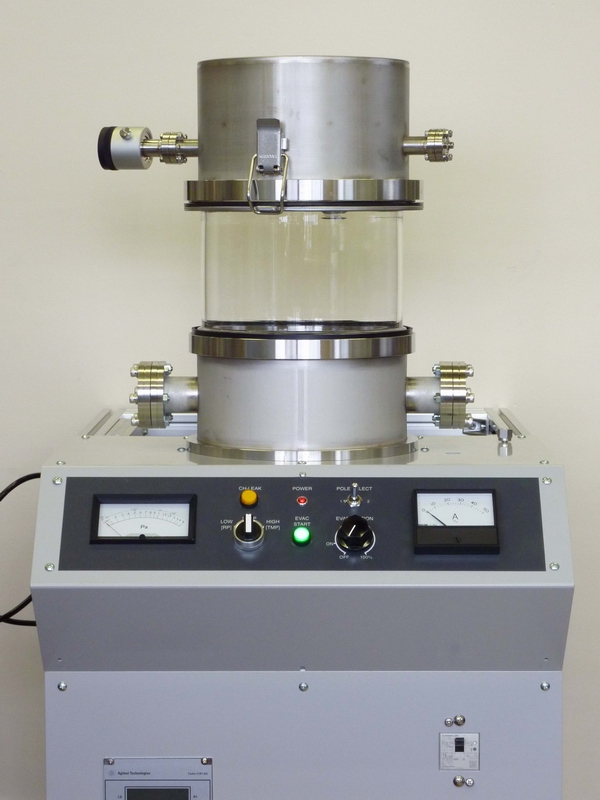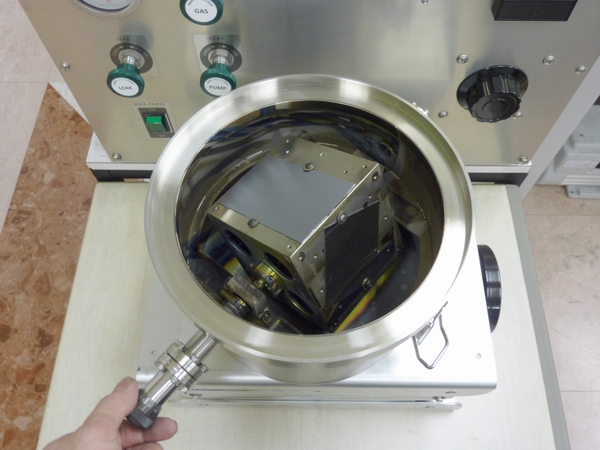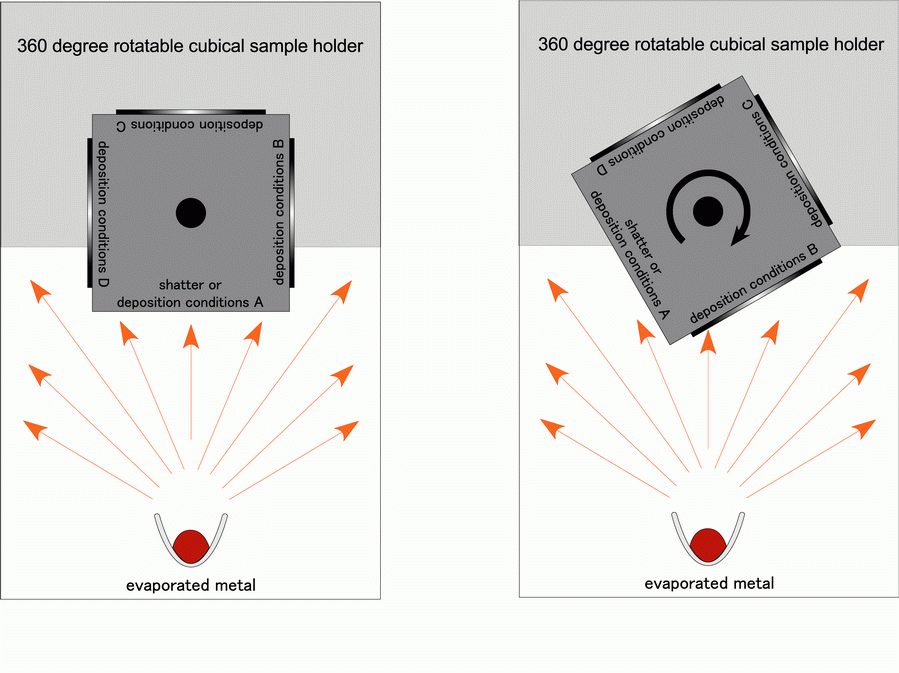Highly-Functional Vacuum Vapor Deposition Apparatus
MPVAP
4-times productivity with 360° inclination of sample holder

*Appearance and specifications are subject to change without notice.
| Purpose: | A vacuum deposition apparatus, equipped with high-performance functions, is made for depositing thin metal films on substrates in a very high precision. |
|---|---|
| Features: |
|

This is a high-performance vacuum deposition system for coating substrates and specimens with various metal films of a nano-level thickness. This system can also form thin films of catalyst for growing vertically-aligned CNT.
The high-performance vacuum exhaust system with turbo molecule pump (TMP) creates a clean vacuum environment that does not require maintenance. The system carries out a fully automated vacuum exhaust operation with the push of a button; thus, the possibility of erroneous operation is reduced and college students without knowledge of vacuum systems can easily use this system for experiments. Two types of vapor sources in the system make it possible to form multi-layer and composite films. This system is also equipped with an ultra-high precision quartz crystal film thickness monitor for real-time monitoring and control of film thickness with a precision of 0.01 nm.
The area for placing samples is now four times larger thanks to the large-area substrate holder with a cubical which rotates 360 degrees that was developed by Microphase. This system can produce samples in 4 conditions of film formation in one process without terminating the vacuum state. This is a very convenient function for studying film thickness dependence and evaporation rate dependence.
Depositing films while rotating the sample holder can form films on a three-dimensional sample from all directions (diagonal directions). In the case of coating metallic films on samples for SEM observations, his feature creates clear three-dimensional SEM images.
Also, the problem of fluctuations in radiation heat associated with the opening and closing of the evaporation inlet shutter
can be avoided by utilizing this rotation holder, and faithful and precise film data can be obtained.
Technically speaking, data on thickness that are produced by commonly used crystal quartz film thickness monitors are sensitive
to temperature fluctuations of the sensors.
Opening and closing an evaporation inlet shutter simultaneously generates fluctuations of radiation heat emitted from a hot evaporation crucible to the sensor,
generating data which differ from the actual film thickness. In the case of a rotation holder,
deposition on a substrate can be started and completed by leaving the shutter open from the beginning and rotating the cubic holder
when the temperature of the evaporation crucible becomes constant.
This process does not generate a fluctuation in radiation heat at the sensor and realizes highly precise control of film thickness.

Figure showing the rotation of sample holder